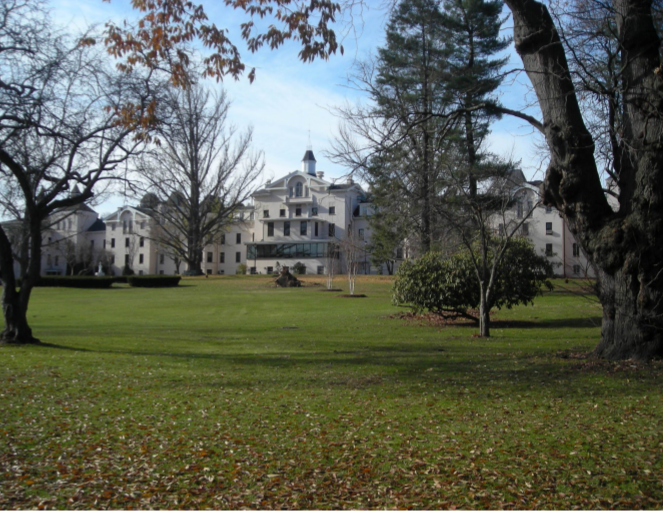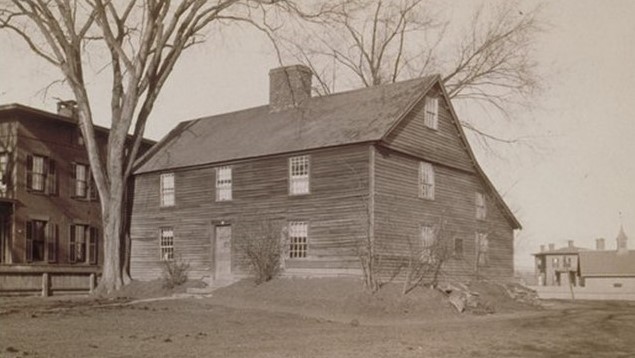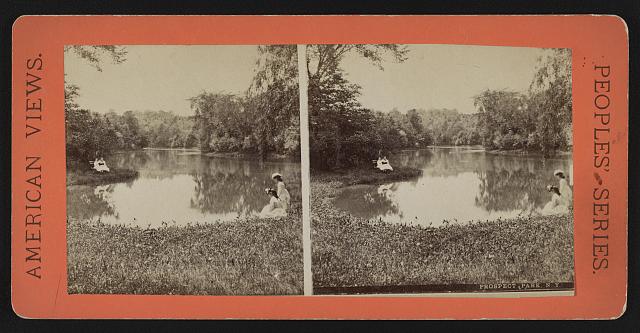
Connecticut has a special place in the Olmsted story. Frederick Law Olmsted was born in Hartford in 1822 to a prosperous secure family, able to provide him with formal and informal education and a well-connected social network. These in turn shaped his early ideas of social obligation and reform, both of which continued to expand and evolve throughout his multifaceted career. When Olmsted died in 1903, his body was returned to Connecticut and interred in the family tomb at Hartford.
In addition to Hartford, Olmsted spent much of his youth in other communities around the state — staying with relatives in Cheshire, attending school in Collinsville, visiting his brother and friends at Yale in New Haven, and launching his first career as an experimental farmer in Guilford. From the time he was able to sit in front of his father on horseback, Olmsted traveled the Connecticut countryside, a favored pastime that helped shape his first notions of landscape.
Connecticut accounts for nearly 300 of the Olmsted firm’s landscape commissions. These projects span a century, from Olmsted and Vaux’s design for the Hartford Retreat for the Insane (1860-1887) to a Greenwich commission that continued into the 1970s (Khakum Wood, 1903-1979). This wide-ranging body of work includes at least one example from thirteen of the fourteen landscape types described in The Master List of Design Projects of the Olmsted Firm published by the National Association for Olmsted Parks (NAOP) and the Frederick Law Olmsted Historic Site in 2008.
Despite Connecticut’s importance to the Olmsted legacy and the significant amount of information available about Olmsted and his firm, there is little contemporary appreciation or understanding for the state’s place in the story. In response to this information gap, and in recognition of the 200th anniversary of Frederick Law Olmsted’s birth in 2022, the Connecticut State Historic Preservation Office and the nonprofit Preservation Connecticut have contracted to complete the state’s Olmsted research and inventory. Funding comes through the Connecticut Community Investment Act.
The project has two principal parts: 1) a statewide historical context that directly addresses the people and places of Connecticut and their role in shaping Olmsted Sr., the Olmsted firm, and the development of landscape architecture in the state; and 2) a field survey and digital analysis to establish a more complete record of extant Olmsted landscapes and the extent to which they remain intact and where possible, to document significant layers of successive designers that may have altered the original work.
Red Bridge Group, a Boston- and San Francisco-based conservation and preservation consulting firm with specialists in GIS and heritage tourism, was selected for the project. Alicia Leuba leads the team which includes Lucy Lawliss, former board chair of NAOP, Liz Sargent and Kevan Klosterwill, historic landscape architects, and Carolyn Brackett, heritage tourism expert. In addition to the main documentation tasks, the team plans to hold student information sessions with Groundworks Bridgeport and the Keney Park Sustainability Project in Hartford.
We hope this project will build on excitement generated by the Olmsted bicentennial to call attention to the importance of landscapes for health, quality of life, and the workings of democracy — all essential Olmsted themes — and to make the case for preserving and enhancing not only landscapes associated with the Olmsted firm, but also historic landscapes in general. For updates, visit https://portal.ct.gov/DECD/Services/Historic-Preservation or www.preservationct.org.











